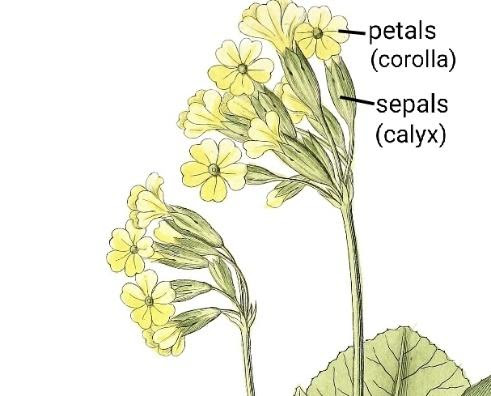
Write difference between Calyx and Corolla?
Answer
461.7k+ views
Hint: Calyx and Corolla, both are the parts of flower. Flower is a condensed shoot. It is the reproductive unit in angiosperm and it is meant for sexual reproduction. Flower has four different whorls arranged successively on the swollen end of the stalk. The four different whorls are Calyx, Corolla, Androecium, Gynoecium.
Complete answer:
Each flower normally has four floral whorls. Calyx and Corolla are two of the floral whorls present in flowers. Calyx and Corolla don’t have any direct function in sexual reproduction. They are also called Accessory organs or non-essential floral organs.

In some flowers the calyx and Corolla are not distinct and are termed as perianth. Example- Lily.
Note:
Based on the position of calyx, Corolla, and Androecium in respect of ovaries in the thalamus, flowers are categorized into three different types- hypogynous, perigynous, and epigynous.
1. Hypogynous- In this flower, the Gynoecium occupies the highest position in the whorl, and the rest other parts are situated below it. Example- Brinjal, Mustard.
2. Perigynous- In this type of flower, Gynoecium is situated at the center, and the rest other parts are situated at the same level on the rim of the thalamus. Example- Rose, peach.
3. Epigynous- In this flower the thalamus grows upward and encloses the ovary completely and gets fused with it and the other parts grow above the ovary. Example- Guava, cucumber.
Complete answer:
Each flower normally has four floral whorls. Calyx and Corolla are two of the floral whorls present in flowers. Calyx and Corolla don’t have any direct function in sexual reproduction. They are also called Accessory organs or non-essential floral organs.
| CALYX | COROLLA |
| The members or parts of this whorl are known as sepals. The sepals are green in color. | The members or parts of this whorl are known as petals. Petals are of various colors. |
| The primary function of calyx is to protect the floral shoot during its bud stage. In mature condition, it supports the flower. | The petals of a flower have the major function to attract insects for the act of pollination. It is the transfer of pollen from the anther to the stigma of the same flower, or different flower of the same plant, or different flower present in different plants belonging to the same species. It is mainly achieved by insects. |
| When the sepals are united, the condition is known as gamosepalous.When the sepals are free, the condition is known as polysepalous. | When the petals are united, the condition is known as gamopetalous.When the petals are free, the condition is known as polypetalous. |

In some flowers the calyx and Corolla are not distinct and are termed as perianth. Example- Lily.
Note:
Based on the position of calyx, Corolla, and Androecium in respect of ovaries in the thalamus, flowers are categorized into three different types- hypogynous, perigynous, and epigynous.
1. Hypogynous- In this flower, the Gynoecium occupies the highest position in the whorl, and the rest other parts are situated below it. Example- Brinjal, Mustard.
2. Perigynous- In this type of flower, Gynoecium is situated at the center, and the rest other parts are situated at the same level on the rim of the thalamus. Example- Rose, peach.
3. Epigynous- In this flower the thalamus grows upward and encloses the ovary completely and gets fused with it and the other parts grow above the ovary. Example- Guava, cucumber.
Recently Updated Pages
Master Class 12 Business Studies: Engaging Questions & Answers for Success

Master Class 12 Economics: Engaging Questions & Answers for Success

Master Class 12 English: Engaging Questions & Answers for Success

Master Class 12 Maths: Engaging Questions & Answers for Success

Master Class 12 Social Science: Engaging Questions & Answers for Success

Master Class 12 Chemistry: Engaging Questions & Answers for Success

Trending doubts
Who was the first woman to receive Bharat Ratna?

Write a letter to the principal requesting him to grant class 10 english CBSE

Why is there a time difference of about 5 hours between class 10 social science CBSE

What is the median of the first 10 natural numbers class 10 maths CBSE

The Equation xxx + 2 is Satisfied when x is Equal to Class 10 Maths

Discuss the main reasons for poverty in India




